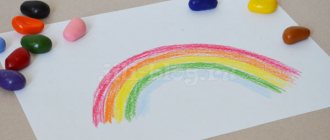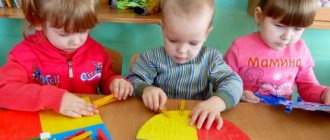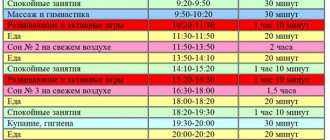What could be the cause of dehydration in children?
1. Difficulty in the flow of fluid into the body. This situation is rare. This, or the lack of drinking water at hand. Or the child’s refusal to drink liquid. For example, due to pain when swallowing. Or severe pathological conditions in which the child cannot swallow independently.
2. Increased release of water and minerals by the body. When the loss exceeds its gain. This situation is observed in acute infections, food poisoning, parasitic infections, antibiotic-associated diarrhea, overheating, and burns.
It is worth talking about these reasons in more detail.
1. Increased fluid loss can occur during acute respiratory infection. With high temperatures, sweating increases. This is a physiological process. This is how the body cools itself. In addition, fluid loss occurs with mucus that is discharged profusely from the nose. And also for coughs, especially productive ones. Severe dehydration usually does not occur with ARVI. However, fluid losses should be replaced in full, especially in young children. That is why pediatricians recommend drinking plenty of warm drinks for colds. Warm water is absorbed faster in the intestines than cold water.
2. The most dangerous condition during dehydration is considered to be an acute intestinal infection. Its symptoms:
- elevated temperature;
- single or multiple vomiting;
- diarrhea, the frequency of stools can be from two (subject to liquid consistency) to 20 or more times per day;
- pain and rumbling in the stomach;
- loss of appetite, weakness, drowsiness;
- refusal of water and drinking.
This infection is especially dangerous in infants. This is due to their physiological characteristics: they have a higher percentage of fluid in the body. For babies, losing even a small amount of fluid can be dangerous.
Intestinal infections are divided into two large groups - viral and bacterial. The basis of treatment for viral infections is the fight against dehydration. Some bacterial infections require an antibiotic. In order to distinguish between the two types of infections, you need to show the child to the pediatrician. You should not prescribe an antibiotic to your child yourself, because... It is not necessary in all cases of intestinal infection.
3. Food poisoning - usually does not threaten the child’s life and goes away quite quickly, within 1-2 days, with rare exceptions.
4. It is very important to replenish fluid for burns, including sunburn. Because damaged skin loses a large amount of fluid.
Reason #6: Individual characteristics
Refusal to eat can be a child's reaction to new foods. Parents need to be patient with such whims. Since a child under 3 years old must be offered new products more than once before he decides to try. And it will take at least 10-20 tastings for him to finally taste the taste.
However, the child will not always like this product. Adults are not forced to eat what they do not like. But for some reason this principle does not work for children. Many parents believe that a child should eat everything. They need to accept and take into account the individual preferences of the baby.
There are cases when a 2-year-old child does not eat anything after his first visit to kindergarten. This suggests that the baby has begun to imitate peers or adults from his environment. This is a fairly common occurrence. Therefore, if parents hear new notes in their child’s voice or obvious imitation of someone from the group, then they should not be afraid to leave him without dinner or lunch. The main thing is to correctly indicate the reason. For example, say that mom needs time to prepare a new menu, so the baby will be left without food for 2-3 days. If the reason was imitation, then the baby will immediately try to correct the situation and begin to behave as usual.
What are the types of dehydration?
Doctors divide exicosis according to severity. Depending on what percentage of body weight the child has lost in the form of water:
Grade 1 – 3% of body weight. Mild degree of dehydration. Its main features:
- thirst;
- dry skin and mucous membranes;
- regular urination.
Grade 2 – from 3 to 6% of body weight. Moderate severity. Main symptoms:
- pronounced thirst;
- dry skin and mucous membranes;
- the tongue is covered with a white or grayish coating;
- weakness and drowsiness;
- urinary retention up to 6 hours;
- in infants there is retraction of the fontanelle.
Grade 3 – 9% or more. Severe dehydration. This condition is dangerous and requires immediate medical attention. Its main features will be:
- baby crying without tears;
- severe weakness and drowsiness;
- pronounced retraction of the fontanel in infants;
- severely dry skin, chapped lips;
- sunken eyes;
The most severe symptoms of dehydration are:
- thin saggy skin;
- loss of consciousness;
- convulsions;
- drop in body temperature;
What should you do if you are dehydrated?
First of all, you need to try to get the child to drink.
1 What should you drink?
- For an infant, breast milk remains the preferred drink. Babies with signs of dehydration should be put to the breast as often as possible, do not skip night feedings, and do not shorten the feeding time. In addition to breast milk, children should be offered plain boiled water.
- For older children, there are special solutions for oral rehydration. With their help, you can replenish not only the loss of water, but also electrolytes (potassium, calcium, sodium, chlorine), as well as glucose. It is better to consult a doctor about choosing a specific drug, because... Not all oral rehydration solutions can be used at an early age. In the absence of a special medicine. Or, if the child refuses to drink it, you can give the child plain water or other liquids.
2 What can’t you give me to drink?
- Coffee or tea should absolutely not be used to replenish fluid loss. These drinks may increase symptoms of dehydration because... have a diuretic effect.
- You should not use sweet carbonated drinks for drinking. They can aggravate the manifestations of the underlying disease.
- Small children should not be given rice water because... it may contain traces of arsenic.
- Don't give your children fruit juices. The daily volume of their consumption is limited in preschool children. Acidic juices can irritate the gastrointestinal tract and worsen diarrhea.
- Don't feed your children cow's milk. It gives a high protein load to the baby’s digestive organs. May cause vomiting. In addition, it should not be given even to healthy children under one year old.
3. How to drink properly?
You need to drink in small portions, starting with a volume of half or a whole teaspoon, gradually increasing the volume to 2-3 tablespoons. The one-time volume is individual and depends on the child’s well-being and the presence of vomiting. The child should be offered liquid every 5-15 minutes. Desoldering continues until the child stops losing liquid.
5. How to determine the required volume of liquid?
Clinical guidelines do not provide strict recommendations in this regard. The approximate volume is 50-100 ml for each kilogram of the child’s weight in the first few hours. For an approximate calculation, you can rely on age. Before 2 years of age, a child needs to consume about a liter of liquid per day, after 2 years of age up to one and a half liters.
6. What to do if the child does not drink?
An alternative to oral feeding can only be droppers. Therefore, every effort must be made to ensure that the child drinks some amount of liquid. If a child categorically refuses special solutions, compote, highly diluted non-acidic juice, or weak tea can be an alternative.
In case of severe dehydration, fluid loss can only be replaced by intravenous administration. This is only possible in an infectious diseases hospital. If a life-threatening condition develops, the child may be taken to the intensive care unit.
How to teach a child to eat on his own?
New question from the “ psychologist ” section:
Yana
Dear Tatyana, I am asking you for help. My son Ilya is growing up, he will turn 5 years old this summer, he is my second child. When he was little, we constantly had problems with appetite, while searching for how to feed him, a bottle of semolina porridge appeared, which subsequently replaced almost all of his food. At the age of 4, I sent him to kindergarten, where he has been for more than six months, where he refuses to eat. At home I feed him with a spoon, but he happily waits for a bottle of porridge. I understand that all this looks ridiculous, but this is our reality. I ask you, give advice on how to put the bottle away less traumatic for him - he falls asleep with it, among other things, and how to force him to sit at the table and eat himself. Thank you in advance for your response.
Tatiana Egorova
Yana, good afternoon!
Your situation is difficult, and in order to solve two problems (remove the bottle and get your son to eat on his own) you will need a lot of patience, firmness and consistency in actions. If Ilya is healthy (can chew solid food, can eat other foods besides semolina porridge, or at least ate something besides it), you can try to wean him off the bottle.
As I understand, you previously did not dare to give him the opportunity to eat on his own, and since childhood, this initiative in food was only on your part. was missed when the child, in addition to milk, is interested in the rest of the food on the adults’ table and begins to reach for it himself, grabbing food with his hands. During this period (from 9-10 months to approximately 1.5 years), the baby usually begins to strive to eat on his own. First, grab pieces from the table, hold them in your hand and bring them to your mouth, drink from a cup, etc. If the mother puts a spoon in his hands and encourages his efforts, the baby subsequently takes this initiative upon himself.
The next thing you need to know is that you don’t need to force your child to eat . At all. Respect your son and his choice. In order for correct eating behavior to develop: feeling of hunger -> active search for food -> absorption of food , it is necessary that the child, firstly, wants to eat and secondly, can get to the food himself .
How to do it? Refuse to coax and pester your child with a spoon: “Well, eat it again... one more time... for mom, for dad...”. Just put food on the table (in accordance with the regime), call Ilya to eat and start breakfast (lunch, dinner) with the whole family. If he doesn’t go, it’s okay, he’ll eat at the next meal. And don’t give any snacks other than water. It is important to develop a feeling of hunger and an active search for food.
I think you get the main idea. Now, regarding your situation directly.
There are two ways.
The first is to quickly finish the bottle . What's the best way to do this?
Stage 1 - Preparation
First, talk to your son, praise him, how big he is now, he has learned everything: sit, walk, run, play, etc. (You can support your story with children's photos). And if before he needed a bottle, now he may well refuse it. Your tone should be friendly and confident. Suggestion can be carried out daily , both by you and by dad (after all, the man in the family for a son may have strong authority that must be used), hinting in passing at how wonderful it is to be big and independent. But big ones don’t eat bottles...
Stage 2 - Parting
After several days of “preparation,” agree with your son to “celebrate” parting with the bottle.
Promise sweets (which he loves), a new toy that he dreams of, and set an hour at X: “Let's have a party! You know, in kindergarten, six- and seven-year-olds say goodbye to kindergarten and go to school, because they have already grown up and become big. So you and I have already grown up for the bottle, let’s say goodbye to it? We will have something delicious and gifts!”
On this special day, celebrate with your whole family with a bottle. You give it to your son, tied with a bow (for solemnity), allow him to drink one last time and let him give it to you, and you say that you will take the bottle to a very small baby who does not yet know how to crawl (or come up with another plausible excuse so that he I couldn’t get it back later). Give gifts that are very desirable for him, go somewhere to a fun children's event where he will definitely enjoy it (to an amusement park, jump on a trampoline, go to a circus, a children's entertainment center, etc.).
Take photos of your son all day, and in the evening praise him for his courage and kindness in taking care of the baby. If he asks “back” - do not give in to persuasion, remind him of the fun holiday, express admiration for his decision and maturity, distract him with a game (you can allow him to go to bed later, do an exciting activity, drink something else before bed - juice, water or compote from a cup, for example).
After a week, the attachment will weaken . Naturally, you don’t buy any more bottles and completely forget about it.
This is interesting: Computer game addiction (gaming addiction)
The second and softer method is desensitization , which is a kind of process of slowly fading away an unwanted habit that has formed. It is carried out in stages and gradually until the child’s attachment to something (to the bottle) weakens.
Stage 1 - Food only at the table
You gradually introduce new rules for using the bottle at intervals of 3-5 days: first, just before bedtime (do not fall asleep with it), then eat the bottle only for dinner (before bedtime - half an hour to an hour), then use the bottle only at the table - like this you will slowly teach your son to eat exclusively at the table and with the whole family (for now, his favorite semolina is his main food).
If your son cannot fall asleep without a bottle , gradually wean him off it by reducing portions , and for dinner try to give the same bottle with the usual amount of food. A little later, instead of a bottle for falling asleep, offer another association related to sleep (an interesting book, a favorite car, etc. that he likes) . Talk to your son, explain that he is already big, and the bottle is for the little ones.
Express out loud positive confidence that he no longer needs her, give funny examples to yourself: “Imagine that mom went to bed with a bottle in her arms?! And dad with semolina porridge in his mouth and in bed?!” Bring ideas to the point of absurdity so that your son himself finds it funny. Let the whole family support you in this explanation and periodically praise Ilya, what a big boy he has already become and express confidence that he will completely manage without her. No moralizing, swearing or ridicule. Only a positive attitude towards the problem (many children have difficulties with separation, but they coped with everything - and you can do it!), good humor, etc. So gradually Ilya’s attachment to the bottle before bed should fade away .
Stage 2 – Bottle + plate
Next you need to switch to the plate, i.e. All food is eaten only from the plate. You can also gradually move in this direction - offer your son a bottle with a smaller portion of porridge. Bring its volume to a minimum every day (200 ml - 180 ml - 150 ml - 100 ml, etc.) And place a plate of semolina porridge next to it. The goal is to switch the consumption of favorite foods from a bottle to the same food from a plate .
And it’s okay if, after drinking the entire bottle with a smaller portion, he doesn’t touch the plate of porridge. Everything will happen in time. If he gets hungry, he wants to. As soon as he discovers that there is very little food in the bottle, turn his attention to the plate. He can finish eating from the plate. If he protests and demands from the bottle, do not follow his lead. Say that the bottle is “tired and wants to rest”, come up with a fairy tale for distraction. At first, feed him from a spoon (from a plate). Try to stretch this process for no more than a week.
Stage 3 - Plate only
As soon as the bottle is empty, you can leave it empty next to it and place a full portion of the plate with semolina porridge. Next, you may “forget” to put the bottle on the table. Now your Ilya has completely switched to eating from the plate. This is already a victory!
Stage 4 - Getting used to eating on your own
To safely reach the cherished finish, be patient again. Some mothers with a similar problem: “How to force a child to eat on his own” decided simply: put food on the table - he won’t eat? - we'll put it away until next time. Doesn’t he want to again, even though he hasn’t eaten anything? - we remove it again, etc. And the hungry child stops showing off and starts eating himself.
Others sent their friend with many children to stay for three days or a week, in whose family the question: “I won’t eat” does not even arise. And the “reluctant” person, looking at the children deliciously sweeping away all the crumbs from the table, involuntarily becomes infected with food passion.
Which path to choose is up to you. You can also use the desensitization method - gradually teach yourself to use a spoon and fork yourself. For example, you have lunch with him. Offer to feed each other at the same time: he feeds you, and you feed him. How to learn to deftly use a spoon - offer to read an interesting book to him, and he will eat with a spoon himself. The same semolina porridge (your favorite is the easiest). So you come up with any unexpected reasons, achieving and encouraging his ability to eat on his own. As soon as he learns and gets used to it, again, you gradually stop reading to him while he eats.
Of course, the desensitization method is very long and it all depends on the character of the child and the mother’s endurance. The most important thing about it is not to retreat on the path of eradicating a bad habit . Give up some slack, and the unlearning process will have to be repeated again .
In the same way, gradually teach him to eat other foods in addition to semolina porridge.
As soon as Ilya learns to independently cope with a variety of foods at home, the problem with food in kindergarten will no longer exist.
You will succeed!
Is there something bothering you about your child? You can ask a psychologist a question .
Subscribe to RSS to receive all blog updates in a timely manner.
What else can you do to help your child?
Children who are dehydrated usually refuse to eat. You should not feed your child if he categorically refuses. As soon as the baby feels a little better, he will ask for food himself. Cereals are considered optimal for nutrition. Porridge with milk diluted half and half with water. You can also offer your baby steamed cutlets, stewed vegetables, mild broths, dryers and crackers. Categorically exclude from the diet sweet carbonated drinks, fatty and fried foods, raw fruits and vegetables and whole milk.
Food should be offered to the child in small portions, at short intervals. In my practice, it often happens that a baby who is feeling better asks for large amounts of food at once. Parents rejoice at the new appetite. As a result, the child is overfed. This provokes a new wave of malaise, vomiting and repeated dehydration.
It is very important to provide an optimal environment. A sick child's room should be cool. The hotter it is, the more water is lost. Dehydration increases.
You should not give your child antiemetic and antidiarrheal drugs on your own. These medications can only be used as prescribed by a doctor and under his strict supervision.
Online consultation with pediatrician Olga Nikolaevna Tekutyeva
Registration online
During the consultation, you will be able to voice your problem, the doctor will clarify the situation, interpret the tests, answer your questions and give the necessary recommendations.
This is fine
According to Dr. Komarovsky, a child’s behavior can be considered normal if:
- He does not want to eat because he is busy (playing or watching cartoons), recently woke up, or is not yet hungry.
- He has a selective appetite. It is normal for a child under 3 years old to have his own preferences. Up to 1 year of age, a baby may prefer dairy products rather than vegetables. And by the age of 2 years, his tastes will change, and he will eat all those foods that he had not touched before. However, the older the child becomes, the more selective appetite is formed under the influence of acquired habits.
- The diet is monotonous. If a child of 2 years old eats almost nothing, then the mother urgently needs to review his menu. An adult must understand how often he introduces new dishes, how many days in a row the baby eats the same food. It is not always necessary to radically change your diet. It’s enough to decorate already familiar dishes in an unusual way, to serve vegetables in the shape of a fairy-tale character or animal. And if you also come up with a story about this fairy-tale hero, then the child will not even notice how he eats most of the proposed dish.
- He is under psychological pressure. Parents forget that the child is a person just like them. He may not always be able to express his needs, but forcing him to do something is not the answer. The child feels the mother’s mood very subtly. Therefore, if she forces you to eat and does not let you leave the table, the baby will perceive this as violence and will reject any product. First of all, it is necessary to explain to the baby that food is used to satisfy needs, lift mood and improve well-being.
- I don't like the taste of food. Parents should remember that children have their own taste buds. Therefore, for them, some foods have an unpleasant taste (too sweet or salty), incorrect consistency (too large pieces or lumps), and inappropriate temperature (extremely hot or cold).
- He is at a certain stage of development. Appetite may change from year to year under the influence of growth hormone or during the period of activation of metabolic processes.
If a 2-year-old child wakes up at night and cries, this does not necessarily indicate a lack of food entering his body. There can be many reasons for this, and parents should not blame his poor appetite for everything.
What are the adverse effects of dehydration on a child?
If help was provided to the child on time and in full, dehydration does not have any negative consequences for the body.
In advanced cases, the consequences may be disruption of the functioning of organs and systems:
- disruption of the cardiovascular system: decreased blood pressure, oxygen starvation of the body, arrhythmia as a result of ion exchange disorders;
- impaired kidney function due to an imbalance of blood electrolytes;
- disruption of the nervous system (convulsions).
- violation of thermoregulation, drop in body temperature.










